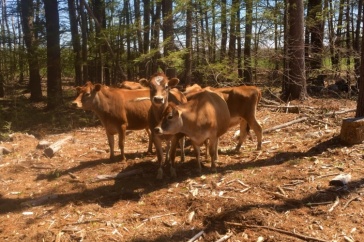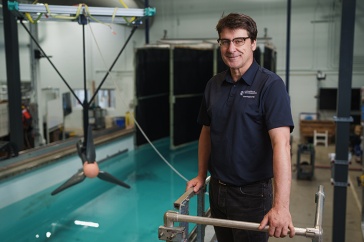
Nature lovers beware, environmental models used by researchers at the University of New Hampshire are showing that the effects of climate change could be much stronger by the middle of the 21st century, and a number of ecosystem and weather conditions could consistently decline even more in the future. If carbon dioxide emissions continue at the current rate, they report that scenarios of future conditions could not only lead to a significant decrease in snow days, but also an increase in the number of summer days over 90 degrees and a drastic decline in stream habitat with 40 percent not suitable for cold water fish.
“These models can help guide efforts to make plans to adapt to the changing climate. Alterations in land use policy could reduce these impacts.”
“While this research was applied to New Hampshire, the approach can be generally applied, and a number of things that people care about will worsen due to climate change,” says Wilfred Wollheim, associate professor in the department of natural resources and the environment and one of the study’s authors. “For example, right now the average number of snow days is 60 per year, but in 20 to 30 years the models show that the number of snow days could be as low as 18 days per year.”
The research, published recently in the journal Ecology and Society, used models bench marked to field measurements to evaluate the Merrimack River watershed in New Hampshire. They found that along with a decrease in snow cover in the winter, other potential impacts could include up to 70 hot summer days per year with temperatures of 90 degrees or more by the end of century, a greater probability of flooding, a considerable loss of cold water fish habitat, and accelerated nitrogen inputs to coastal areas which could lead to eutrophication, an abnormal amount of nutrients which can pollute the water and deplete fish species. Researchers say that the biggest impact will be around urban areas, near where people live.
“Land use and population growth interacting with climate change are also important drivers,” says Wollheim. “These models can help guide efforts to make plans to adapt to the changing climate. Alterations in land use policy could reduce these impacts. In particular, prevention of sprawl and investment in storm and wastewater infrastructure would further maintain more ecosystem services. Implementing policies that reduce greenhouse gas emissions are essential to limit even further changes.”
The researchers say this study is the first time a model like this has been applied to New England watersheds that consistently account for climate change, land use change, forest ecosystem processes and aquatic ecosystem processes, including variability in weather that occurs within years (seasonal and storm) and across years, to assess a whole suite of changes at the same time.
This research was funded by NSF EPSCoR Ecosystems and Society (#EPS 1101245). Partial funding was provided by the National Sea Grant College Program of the U.S. Department of Commerce’s National Oceanic and Atmospheric Administration grant NA10OAR4170082 to the N.H. Sea Grant College Program, and by the New Hampshire Agricultural Experiment Station (NHAES) through USDA National Institute of Food and Agriculture Hatch Project 0225006. This is NHAES Scientific Contribution Number 2736.
Find out what other UNH researchers are discovering. Meet a Researcher
-
Written By:
Robbin Ray ’82 | UNH Marketing | robbin.ray@unh.edu | 603-862-4864

















































